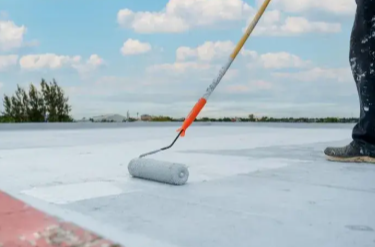How Weatherproofing Protects Your Investment
Weatherproofing is a cost-effective way to protect your home’s value and prevent costly repairs. By shielding your property from weather damage and reducing expenses, it ensures long-term structural integrity. This guide highlights why weatherproofing is essential for every homeowner, no matter the climate.
The Hidden Costs of Weather Damage
Weather damage doesn’t always announce itself with dramatic events. More often, it creeps in through small vulnerabilities that compound over time. A tiny gap around a window frame allows moisture to seep into wall cavities. A loose shingle permits water to infiltrate your roof deck. These seemingly minor issues can escalate into major structural problems that cost tens of thousands to repair.
Water damage alone accounts for billions in insurance claims annually. However, many weather-related issues fall below insurance deductibles or aren’t covered at all. When you factor in increased energy bills from poor insulation, premature replacement of exterior materials, and potential health costs from mold exposure, the financial impact becomes staggering.
Consider that replacing a damaged roof can cost $15,000 to $30,000, while preventive weatherproofing measures might cost a fraction of that amount. The return on investment becomes clear when you view weatherproofing as insurance against catastrophic repair bills.
Key Areas Where Weatherproofing Saves Money
Roof Protection and Longevity
Your roof bears the brunt of weather exposure, making it your home’s first line of defense. Proper weatherproofing extends roof life significantly by preventing ice dams, wind damage, and water infiltration. Regular inspection and maintenance of flashing, gutters, and shingles can add decades to your roof’s lifespan.
Professional weatherproofing treatments create barriers against UV radiation, which breaks down roofing materials over time. These protective measures slow deterioration and maintain your roof’s structural integrity, delaying costly replacement projects.
Foundation and Structural Integrity
Foundation problems often stem from poor water management around your home’s perimeter. Weatherproofing includes proper grading, drainage systems, and foundation sealing that prevents water from compromising your home’s structural foundation.
Basement waterproofing and exterior foundation treatments prevent costly issues like settling, cracking, and moisture intrusion. These problems can affect your entire home’s stability and require expensive structural repairs if left unchecked.
Siding and Exterior Protection
Your home’s exterior materials face constant weather exposure. Weatherproofing treatments for siding, trim, and other exterior elements prevent rot, warping, and deterioration that necessitate premature replacement.
Proper caulking, painting with weather-resistant products, and installing appropriate barriers keep moisture out while allowing your home to breathe. This balance prevents both water damage and trapped moisture problems that can lead to structural decay.
Energy Efficiency and Long-Term Savings
Weatherproofing dramatically improves your home’s energy efficiency by eliminating air leaks and improving insulation effectiveness. These improvements translate to lower heating and cooling costs year-round.
Air sealing around windows, doors, and penetrations can reduce energy bills by 10-20%. When combined with proper insulation and moisture barriers, weatherproofing creates a thermal envelope that maintains comfortable indoor temperatures with less energy consumption.
Modern weatherproofing materials and techniques often qualify for energy efficiency rebates and tax credits, further improving the financial return on your investment. These incentives can offset a significant portion of weatherproofing costs while providing ongoing savings.
Preventing Costly Interior Damage
Effective weatherproofing protects your home’s interior from moisture-related damage that can be expensive to remediate. Water intrusion leads to damaged drywall, flooring, insulation, and personal belongings.
Mold remediation alone can cost thousands of dollars and may require temporary relocation during treatment. Professional weatherproofing prevents the moisture conditions that allow mold and mildew to thrive, protecting both your investment and your family’s health.
Paint damage, wood rot, and carpet replacement are additional interior consequences of poor weatherproofing. These repairs disrupt your daily life and drain your budget in ways that proper prevention could have avoided.
Professional vs. DIY Weatherproofing
While some weatherproofing tasks suit DIY approaches, comprehensive protection often requires professional expertise. Professionals understand how different weather protection systems work together and can identify vulnerabilities that untrained eyes might miss.
Professional weatherproofing includes specialized materials and techniques that provide longer-lasting protection. While the upfront cost may be higher, professional installation often comes with warranties that protect your investment further.
However, homeowners can handle certain maintenance tasks that support professional weatherproofing efforts. Regular gutter cleaning, caulk inspection, and basic exterior maintenance help maximize the effectiveness of professional treatments.
Read Also: The Future of Cummins Technology in Singapore: Innovations and Developments
Timing Your Weatherproofing Investment
The best time for weatherproofing depends on your climate and specific needs, but spring and fall generally offer ideal conditions for most projects. Addressing weatherproofing before severe weather seasons provides maximum protection when you need it most.
Don’t wait for visible damage to invest in weatherproofing. Preventive measures cost significantly less than reactive repairs and provide better long-term protection. Regular maintenance schedules help you stay ahead of potential problems.
Consider weatherproofing, like metal roofing, like those in Michigan, as part of routine home maintenance rather than an optional upgrade. Like changing your car’s oil, consistent weatherproofing maintenance prevents major breakdowns and extends your home’s functional life.
Conclusion
Weatherproofing is a smart investment that protects your home, reduces maintenance costs, and lowers energy expenses over time. By assessing your home’s vulnerabilities and creating a protection plan now, you can avoid future repairs and preserve its value.






